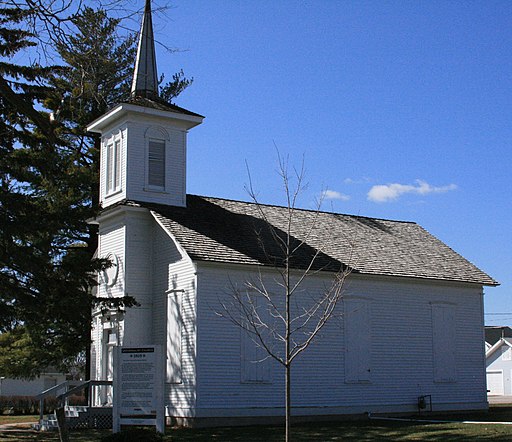Kurt Meyer chairs the Executive Committee of Americans for Democratic Action (ADA) and is President of Humanities Iowa. For the past year, he has written a weekly column for the (St. Ansgar) Enterprise Journal, where this commentary first appeared. -promoted by Laura Belin
I’m worried about the church. I’m not talking here about my local congregation, the church in Mona. I’m not thinking about the Evangelical Lutheran Church in America (ELCA), the denomination I affiliate with. I’m not even referring to Christianity in general, although this is my primary concern.
Concern about “the church” is directed toward religion in America. Mark me down as one who believes in religion and its practice. It’s a major factor in my life and in lives of many I love. Additionally, I have worked with and for many churches and faith-based organizations over the years, professionally and as a volunteer, in relationships that are both deep and meaningful.
Throughout history, religion has had a positive impact on the lives of Americans, including the non-religious. For example, many outstanding hospitals, colleges, and human-service providers were founded by religious groups and serve the broader community, an example of faith in action. What concerns me is that religion is fading as a factor in people’s lives.
According to recent Gallup polling, Americans considering themselves members of a church, synagogue, or mosque dropped to 47 percent, the lowest total since Gallup began asking about membership in 1937, when the figure was 73 percent. People saying religion is “very important to them” is now at a 21-year low.
In many respects, this is not “new news.” The decline in mainline churches is part of a long-term trend. A decade ago, when I worked with the National Council of Churches, we closely tracked trends confronting “the big five” Protestant members (major NCC supporters) – Presbyterians, United Methodists, Episcopalians, United Church of Christ (Congregationalists), and ELCA Lutherans. All indications pointed downward. Roman Catholics, a NCC collaborator but not a member, saw similar trends.
Church membership correlates strongly with age; 66 percent of adults born before 1946 belong to a church. This percentage is 58 for baby boomers, 50 for Generation X, and 36 for millennials. One news story noted, “For some Americans, religious membership is a relic of an older generation.” Ouch!
Two reasons are cited for this decline: distrust of institutions and disillusionment with religious leaders. Of course, as millennials age, more may connect with churches. This strikes me as a rather slender reed for planning.
Much good that takes place in the world is traceable to faith-motivated people seeking to make the world better. When this base is diminished, society starts to wobble. Hence, my concern.
While downward trends don’t apply to all denominations, assuming valid polls, who or what will pick up the community-engagement slack? Government? Secular organizations? Kindhearted neighbors? I doubt it will come from White evangelicals who, despite more recent political engagement, have shown less interest in feeding the hungry, tending the sick, housing the homeless, et cetera.
Clearly, pandemic-influenced numbers merit an asterisk. Church membership is unlikely to rise without in-person gatherings, although some entities have mastered virtual worship. Which brings me to my next point. Americans are generally creatures of habit. Once established, patterns bring comfortable routine into our lives. Observe, for instance, how people who worship regularly often sit in the same pew. The pandemic, however, has dramatically disrupted routines.
Will well-established habits snap back when “normal” returns? While I’m hopeful, I don’t know. Surely, many of the faithful will return… well, faithfully. What about those who have discovered a more leisurely Sunday morning routine?
Just as temperature and blood-pressure inform us about an individual’s well-being, there are many ways to assess a nation’s “social health”. Church engagement is one indication of our country’s social capital and, according to Gallup, trends are not good. If, as I believe, we must continue to serve as our brothers’ and sisters’ keepers, at some point, this commitment may not be rooted in faith. I pray something rises up to fill this void.
One last point, lest I be too depressing. Religion and its practice have managed to exist – in some cases, thrive – long before me, predating the National Council of Churches, Gallup, even the United States. I’m under no illusion that religion in America requires my monitoring. Perhaps current challenges are merely birth pangs of an emerging new order. This would be the kind of miraculous turnabout religions are known for.
Top image: Universalist Church in Mitchellville, Iowa, which is listed on the National Register of Historic Places. Photographed in 2010 by Richc80 for www.randomiowa.com and available via Wikimedia Commons.

